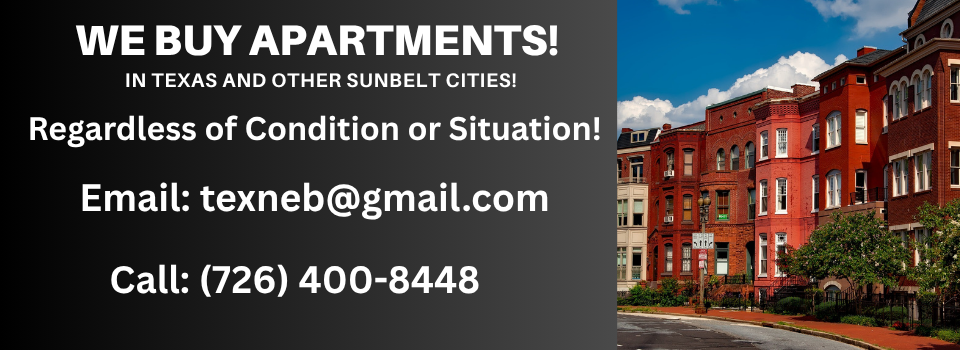The first thing that the commercial real estate lender does is determine if the loan fits into the lender’s risk guidelines and to gauge the risk the loan will present in terms of potential default. The greater risk that a loan possesses, the higher the reward or interest rate the lender will charge, and the more stringent the lenders guidelines will be for the loan.
To do this, every aspect of the loan is examined by the lender’s underwriter – the quality of the building, the income stream, and the quality of the borrower.
However, the property’s merits matter more than the borrower’s qualifications. Some of the items the lender considers are:
Curb appeal
The commercial real estate lender rates the property according to its current physical condition.
What is the “curb appeal” of the building or how does it look? Example: In the event of a foreclosure, an ugly building would be harder for a lender to sell than an attractive one, increasing the risk to the bank.
Tenants
Who are the tenants and how long are the existing leases?
If the tenants leases are expiring 30 days after the loan closes, that represents more risk to the income stream of the building than leases that expire in three years. An example: a Home Depot as an anchor tenant with a long-term lease would score more points than a Dollar Store, which is typically on a shorter term lease.
What is the quality of the tenants, or their financial strength?
A project with Kmart as a tenant would have seemed very strong – until Kmart went into bankruptcy and closed locations. A space the size of Kmart is hard to rent out, which makes those buildings harder to sell at the price the lender needs to cover the defaulted loan.
A commercial real estate lender also reviews how long a tenant has been in business.
Remember, like any investor, a lender making a commercial real estate loan is making a risk/reward judgment.
The Borrower
Who is the borrower? While the key to commercial real estate loans is the net operating income the building produces, the quality of the borrower does come into play. An underwriter wants to know credit scores and whether the borrower has late payments, particularly on mortgages. Mortgage lates will be the death knell of a loan for a majority of lenders.
The lender will also look at a borrower’s liquid assets to determine their ability to come up with cash in emergencies, the borrower’s net worth, and the borrower’s experience.
But keep in mind that while the borrower’s financial strength comes into play, it’s priority number 3 after the property’s income and the quality of the property.
Quality of the Lease
A commercial real estate lender determines the quality of the lease by looking at number of years on the lease, renewal options, rental increases and whether the tenant reimburses for property taxes, insurance and maintenance.
Historical Performance of the Property
Lenders rate the quality of a property by how well it has been operating in the past. A lender usually favors a property that has at least 12 months of stable operation. They will also look at the occupancy history of the property as well as the market occupancy of similar properties in the area. The higher the occupancy, the lower the risk.
Debt Service Coverage Ratio (DSCR)
The major question a commercial real estate lender asks is: Does this building’s income service the loan amount with an appropriate level of debt service coverage?
To answer this question, the underwriter first determines the current Net Operating Income (NOI):
NOI = Gross rents – operating expenses
The operating expenses include property taxes, building insurance, building utilities, 5% of gross rents for vacancy, and 5% of gross rents for management of the building.
To determine the DSCR, the underwriter then uses the following formula:
DSCR = Net Operating Income (NOI) ÷ Annual Debt Service
The typical minimum level for debt service coverage is:
1.2x for multifamily properties
1.25x for other commercial property types
As a side note, consider the risk/reward thinking that goes into a lender’s decision based on DSCR. All things being equal, what represents a more attractive commercial real estate loan scenario, strictly according to DSCR: 1.25x coverage or the same building at a 1.35x coverage?
Sounds simplistic, but of course the higher coverage is better because it provides more of a cushion for the borrower who has to pay the debt service and creates a better situation for the lender in the event they have to foreclose and sell the building.
Loan amount vs LTV
Loan to value (or LTV) is not a term that a commercial underwriter really considers when making a determination on the dollar amount of the commercial real estate loan that will be offered for a purchase. The key determination is going to be how the income of that building will service the debt of a certain loan amount.
Loan to Value Ratio = Mortgage Amount ÷ Appraised Value of Property
Of course, other factors, such as an outside appraisal, come into play when an underwriter is calculating loan amount, but DSCR is going to be the key number. Without a coverage ratio at an acceptable level, the other factors become irrelevant.
Cap Rate (Capitalization Rate)
The Cap Rate is used by the underwriter, as well as the investor or borrower, to get some idea of the value of the building and whether it has a good chance to appraise at an appropriate value. The Cap Rate for the given area can be used in conjunction with the NOI of the building.
Cap Rate = Net Operating Income (NOI) ÷ Actual Purchase Price
If you are trying to determine a Cap Rate for the market, contact a local commercial real estate appraiser or contact a local commercial real estate broker that specializes in the type of product that you are purchasing.
As I say throughout my blogs, if I may be of assistance with your real estate questions please contact me, I truly want to help. My way of giving back is to give away my knowledge. Thank you for reviewing this blog.


